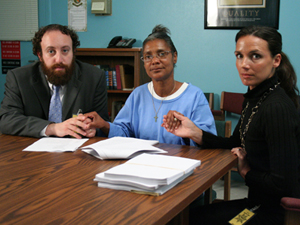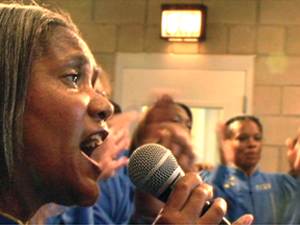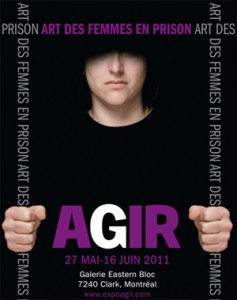
Crime after Crime presents the agonizing story of one woman’s wrongful first-degree murder conviction and her eventual release after serving 27 years behind bars, just months before her death from lung cancer at the age of 50. This film is more than just the story of one woman’s battle for justice however. Crime after Crime shapes multiple histories: it tells of the corruption within the criminal justice system; it speaks to the painful and ongoing realities of violence against women; and it reveals the ugliness of racism. Despite the rawness of these truths, Crime after Crime also manages to highlight the strength that emerges from religious faith while celebrating the power of music to touch people’s hearts and minds.
In 2002, California became the first and only US state to enact the Habeas law, which provides a window of opportunity for women victims of domestic violence serving time for the death of their abusers. Penal Code §1473.5 stipulates the conditions under which these women can get their cases reopened and reviewed.It was just after this law was instituted that Joshua Safran and Nadia Costa (pictured below with Peagler) – two lawyers with no experience in criminal law and working pro bono – met Deborah Peagler in the Central California Women’s Facility (CCWF) and took on her case.

When Yoav Potash began producing and directing this film, he could not have known the length of time and depth of commitment it would take to bring it to the big screen. For more than seven years, Potash – along with Safran, Costa and Bobby Buechler, the investigator that was hired to unearth the truths that had been deliberately hidden and obstructed by the California State authorities – worked tirelessly to have Peagler released. Over the years these individuals forged emotional and spiritual bonds that changed each one of them and brought them to embrace their highest values.
For Costa, a long-distance runner, taking on this case meant understanding just how challenging it is to take life one step at a time off the track, and in the face of extreme adversity. For Safran, an Orthodox Jew, working to break the tyranny of justice obfuscated meant embodying his daily prayers – including the Birchot HaShachar (the morning blessings), specifically the one referring to matir ahsurim (releasing those who are bound or imprisoned) – in a conscious and dedicated way. For Peagler, the woman at the centre of this life-long drama, it was the belief that singing god’s praises was the truest connection to life that comforted her day after day and gave her the strength to ultimately meet her own death in peace.
 While offering solace is an important aspect of creativity, so too is its capacity for challenging individuals and society as a whole to see things in a new way. This film affirms both the significance of creativity’s healing capacity and its activist agency. The travesty of justice that left Deborah Peagler a victim of state violence long after she was safe from the domestic violence inflicted upon her by her husband is so clearly presented it cannot help but to contribute to undoing systemic oppression.
While offering solace is an important aspect of creativity, so too is its capacity for challenging individuals and society as a whole to see things in a new way. This film affirms both the significance of creativity’s healing capacity and its activist agency. The travesty of justice that left Deborah Peagler a victim of state violence long after she was safe from the domestic violence inflicted upon her by her husband is so clearly presented it cannot help but to contribute to undoing systemic oppression.

This creative force, which leads to personal empowerment and social responsibility, is also what inspired the artworks by 49 incarcerated women created in collaboration with eight multidisciplinary artists who were invited to work within four detention facilities in and around the greater Montreal area, which will be shown to the public in an elaborate exhibition entitled AGIR / ART OF WOMEN IN PRISON.Presented by the Société Elizabeth Fry du Québec and Engrenage Noir / LEVIER, this community art event to be held at the Eastern Bloc gallery between May 27-June 16, 2011 is the first of its kind in Canada and offers a forum for the voices of criminalized women, usually left unheard. Thirty-five artworks explore the link between incarceration and poverty – economic, social, familial, cultural or emotional. This exhibition reveals the individual struggles of women in conflict with the law and acknowledges them in an artistic context – beyond a crime, a prison sentence or a set of stereotypes.
While Crime after Crime details the specifics of Peagler’s case much more than the works presented in the AGIR exhibition focus on the crimes committed by the women involved in the AGIR project, ultimately the film’s strength is not the exposé of what Peagler did or didn’t do and why. As with the works in the AGIR exhibition, what Potash and the others managed to achieve in bringing Peagler’s story to light – and following it with such compassion and devotion to justice – is to affirm the vulnerability of being human and the need we all have to connect with respect and love.
Crime after Crime has it’s Canadian Premiere on May 15th at The Bloor Cinema as part of the Toronto Jewish Film Festival.
For more information:
http://crimeaftercrime.com/
http://www.expoagir.com/en_index.html
Devora Neumark is an interdisciplinary artist and a faculty member in the MFA-Interdisciplinary Art program at Goddard College (Vermont) and co-director of Engrenage Noir / LEVIER, a Montreal-based non-profit community and activist arts advocacy and funding organization. Neumark is a spokesperson for the AGIR exhibit happening at The Eastern Bloc this May 27th -June 16th.





